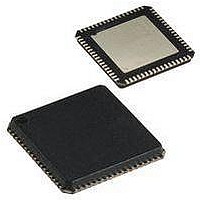AT90USB1287-16MU Atmel, AT90USB1287-16MU Datasheet - Page 7

AT90USB1287-16MU
Manufacturer Part Number
AT90USB1287-16MU
Description
Microcontrollers (MCU) 128kB Flash 4kB EEPROM 48 I/O Pins
Manufacturer
Atmel
Datasheet
1.AT90USB1287-16MU.pdf
(30 pages)
Specifications of AT90USB1287-16MU
Data Bus Width
8 bit
Program Memory Type
Flash
Program Memory Size
128 KB
Data Ram Size
8 KB
Interface Type
2-Wire, SPI, USART
Maximum Clock Frequency
16 MHz
Number Of Programmable I/os
48
Number Of Timers
4
Operating Supply Voltage
2.7 V to 5.5 V
Maximum Operating Temperature
+ 85 C
Mounting Style
SMD/SMT
Package / Case
QFN-64
Minimum Operating Temperature
- 40 C
On-chip Adc
10 bit
Lead Free Status / Rohs Status
Details
Other names
AT90USB1287-MU
Available stocks
Company
Part Number
Manufacturer
Quantity
Price
Part Number:
AT90USB1287-16MU
Manufacturer:
ATMEL/爱特梅尔
Quantity:
20 000
2.2.4
2.2.5
2.2.6
2.2.7
2.2.8
7593GS–AVR–03/08
Port B (PB7..PB0)
Port C (PC7..PC0)
Port D (PD7..PD0)
Port E (PE7..PE0)
Port F (PF7..PF0)
Port B is an 8-bit bi-directional I/O port with internal pull-up resistors (selected for each bit). The
Port B output buffers have symmetrical drive characteristics with both high sink and source
capability. As inputs, Port B pins that are externally pulled low will source current if the pull-up
resistors are activated. The Port B pins are tri-stated when a reset condition becomes active,
even if the clock is not running.
Port B has better driving capabilities than the other ports.
Port B also serves the functions of various special features of the AT90USB64/128 as listed on
page
Port C is an 8-bit bi-directional I/O port with internal pull-up resistors (selected for each bit). The
Port C output buffers have symmetrical drive characteristics with both high sink and source
capability. As inputs, Port C pins that are externally pulled low will source current if the pull-up
resistors are activated. The Port C pins are tri-stated when a reset condition becomes active,
even if the clock is not running.
Port C also serves the functions of special features of the AT90USB64/128 as listed on
Port D is an 8-bit bi-directional I/O port with internal pull-up resistors (selected for each bit). The
Port D output buffers have symmetrical drive characteristics with both high sink and source
capability. As inputs, Port D pins that are externally pulled low will source current if the pull-up
resistors are activated. The Port D pins are tri-stated when a reset condition becomes active,
even if the clock is not running.
Port D also serves the functions of various special features of the AT90USB64/128 as listed on
page
Port E is an 8-bit bi-directional I/O port with internal pull-up resistors (selected for each bit). The
Port E output buffers have symmetrical drive characteristics with both high sink and source
capability. As inputs, Port E pins that are externally pulled low will source current if the pull-up
resistors are activated. The Port E pins are tri-stated when a reset condition becomes active,
even if the clock is not running.
Port E also serves the functions of various special features of the AT90USB64/128 as listed on
page
Port F serves as analog inputs to the A/D Converter.
Port F also serves as an 8-bit bi-directional I/O port, if the A/D Converter is not used. Port pins
can provide internal pull-up resistors (selected for each bit). The Port F output buffers have sym-
metrical drive characteristics with both high sink and source capability. As inputs, Port F pins
that are externally pulled low will source current if the pull-up resistors are activated. The Port F
pins are tri-stated when a reset condition becomes active, even if the clock is not running. If the
JTAG interface is enabled, the pull-up resistors on pins PF7(TDI), PF5(TMS), and PF4(TCK) will
be activated even if a reset occurs.
Port F also serves the functions of the JTAG interface.
80.
84.
87.
AT90USB64/128
page
83.
7














